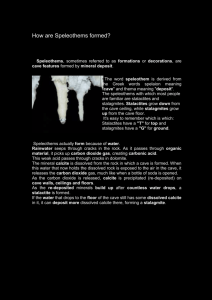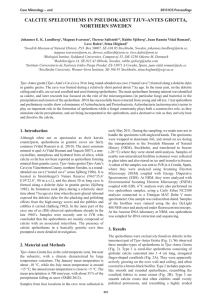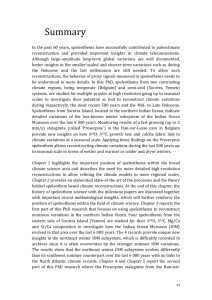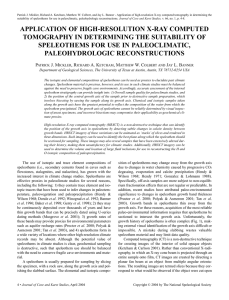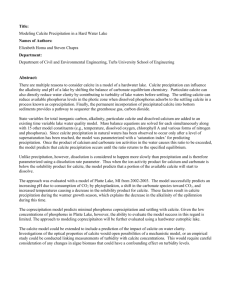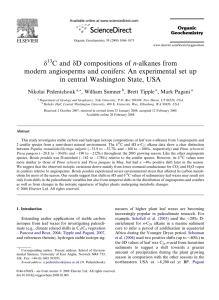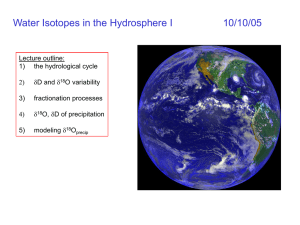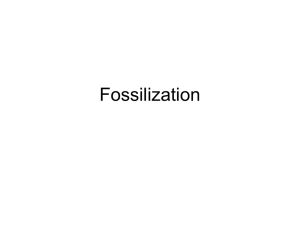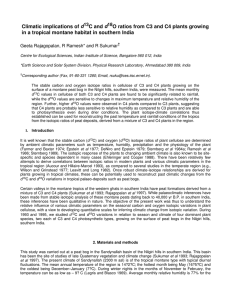speleothems Geo450
advertisement
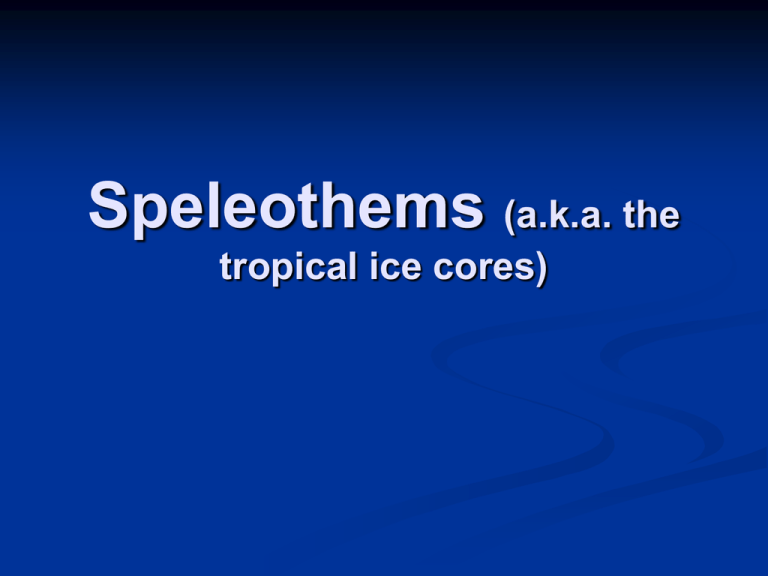
Speleothems (a.k.a. the tropical ice cores) Cave deposits Laminated structure of CaCO3 Evaporation-deposition Slow CO2 degassing == minimal disequilibrium with drip waters Rapid CO2 degassing == disequilibrium precipitation Possibility for water-soil or water-rock chemical equilibration == undermines reliability of speleothems as paleothermometers Schwartz (2007) Geochemistry of speleothems T (°C) = 16.5 - 4.3 (d18Oct - d18Ow) + 0.14 (d18Oct - d18Ow)2 (Epstein et al. 1953) d18Oct would also reflect precipitation patterns Caveat: the “amount” effect in d18Ow (increase in d18O during heavy rain events) Age control: 14C - have to correct for nonradioactive C introduced into DIC from dissolution of calcite in the soil zone U/Th - have to account for detrital 230Th in ‘dirty’ calcite Geochemistry of speleothems Have to estimate d18O of drip water: Close to annual average of d18Oppt But local alteration due to surface evaporation, transpiration, selective recharge of seasonal precipitation (snow meltwater) Some assumptions and ways to estimate dw: Secular variation in d18Oppt = annual (seasonal) variation (assumes a particular rate of change with time) Analysis of fluid inclusions in the speleothems (dD of the water should be unchanged) dDppt = 8 d18Oppt + d0 (d0 is deuterium excess, 10permil) Using models for variation in d18Oppt (derivation of water vapor from seawater with known variability in d18O) Paleoclimate studies Matching changes in North Atlantic climate and South China Greenland cooling; coincidentally, enhanced summer monsoon rains in South China, reflected in the isotopes Wang et al. 2001 But what about the carbon? Fractionation between DIC and calcite is very small; so, d13C reflecting isotopic composition of drip water d13C in calcite affected by: C3/C4 plants balance; C4 - higher d13C Plant vegetation density above cave -- dissolution by reaction w/ atm = higher d13C d13C increases with decreasing rainfall due to decrease in the contribution of HCO3- to the drip water (Frumkin et al. 1999,2000)
